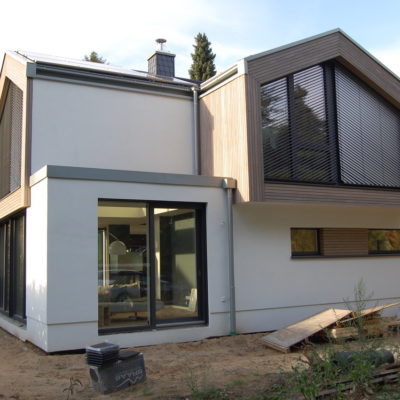Skygarden House

A central light and air shaft – an open-riser stair topped with large operable skylights coupled with strategically placed operable windows – creates a stack effect in the cooling season, drawing warm air upward and cool air in the lower levels. The light shaft also brings natural light deep into the centre of the house to optimize daylighting. The large glazing areas provide passive solar gain in winter and solar exclusion in summer (with the help of a large tree). High performance insulation, an airtight building envelope and mechanical ventilation with energy recovery reduces mechanical air conditioning and increases comfort levels.

The house’s mechanical and electrical systems are completely integrated with the passive design strategies to achieve the most efficient methods of heating, cooling and lighting while minimizing energy costs. Natural ventilation through operable windows and the central operatem that significantly reduces energy use compared to a standard air conditioning system. The green roofs and high performance insulation help to reduce heat loss and gain through the building envelope. Photovoltaic panels on the roof are planned for the future – rough-in wiring was installed to allow for later installation as well as for a Tesla battery to take advantage of storage of electricity at lower cost time periods. The integration of these systems results in improved building performance, energy conservation, and occupant comfort with an annual energy consumption of only 75.8 MJ/m2 (taken from owner’s utility bills).

Life Cycle Analysis was a strategic part of the renovation process. The existing masonry exterior side walls of the house were maintained and existing appliances, doors, furnace and radiators were donated. FSCcertified lumber and flooring was used and interior wood cabinet wood products include formaldehydefree wood products. The plumbing runs through PEX tubing made from cross-linked HDPE polymer rather than copper (lighter weight for shipping and less material used in installation).

The exterior wood is a thermally-treated ash, made from the destruction of ash trees due to the emerald-ash borer disease. All plumbing fixtures are low flow to minimize potable water use. Domestic hot water is supplied ‘on demand’ from the radiant heating system boiler, reducing potable water wastage due to wait times. In the design of the landscape, rainwater collection for irrigation is incorporated in a cistern at the back of the yard, reducing potable water consumption for plants.



